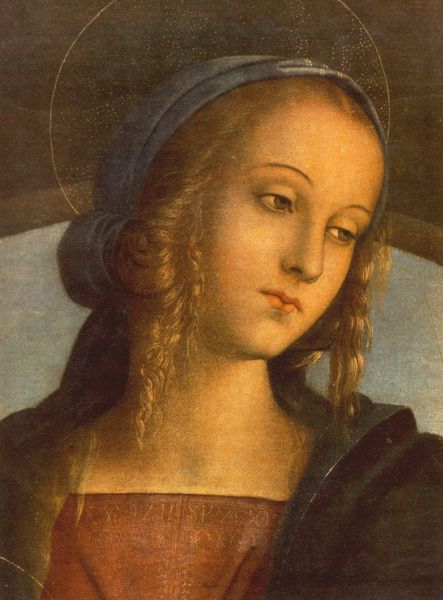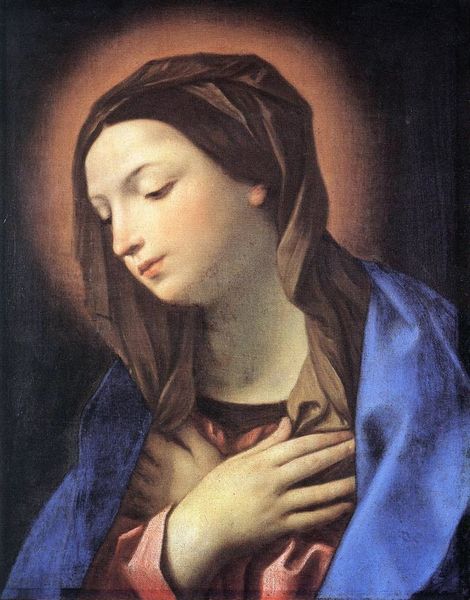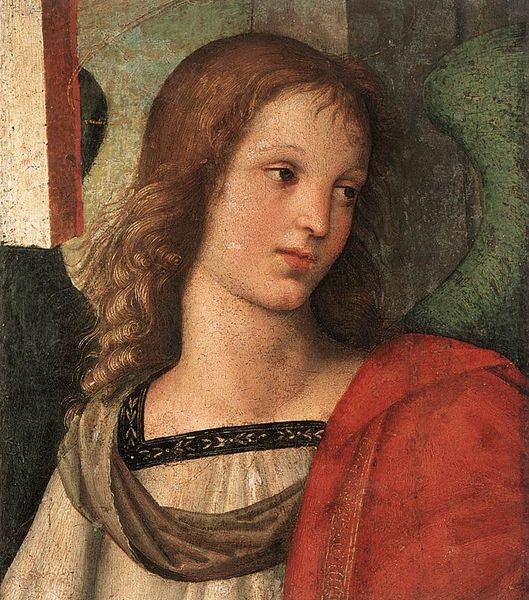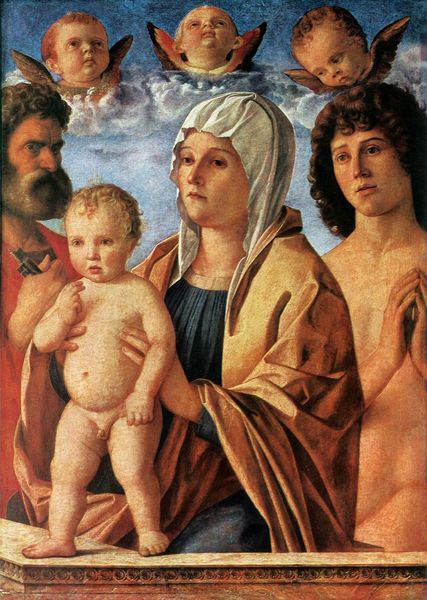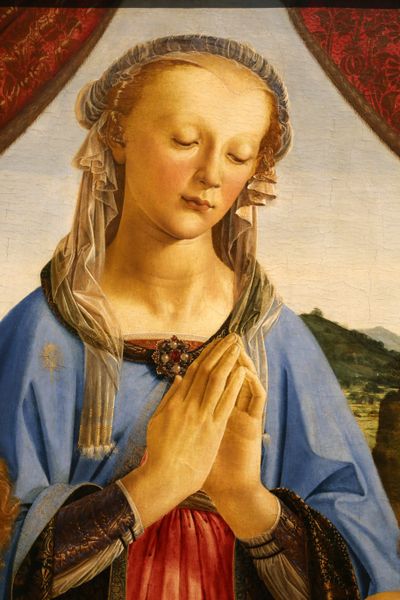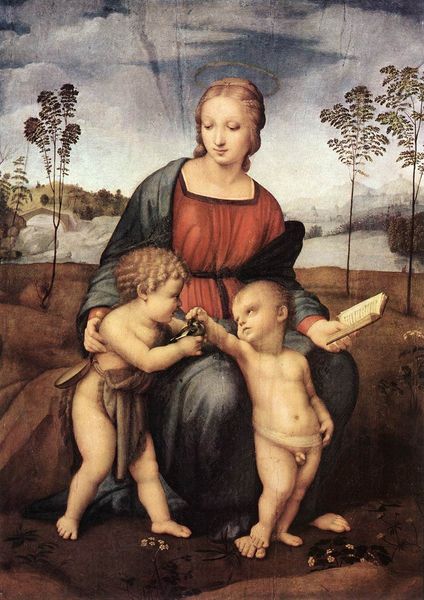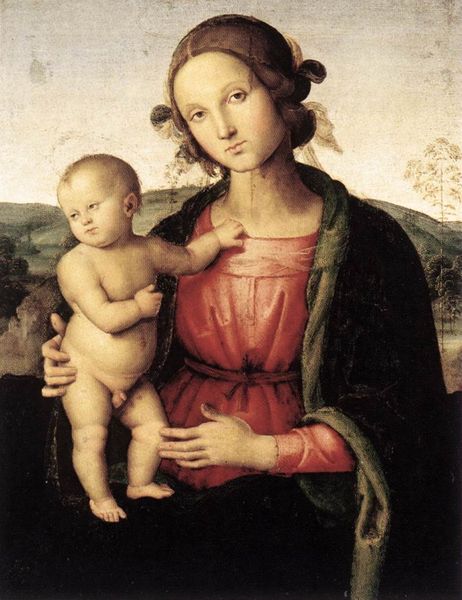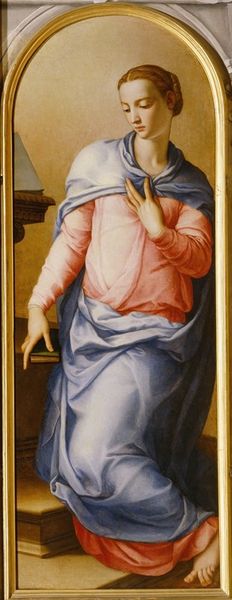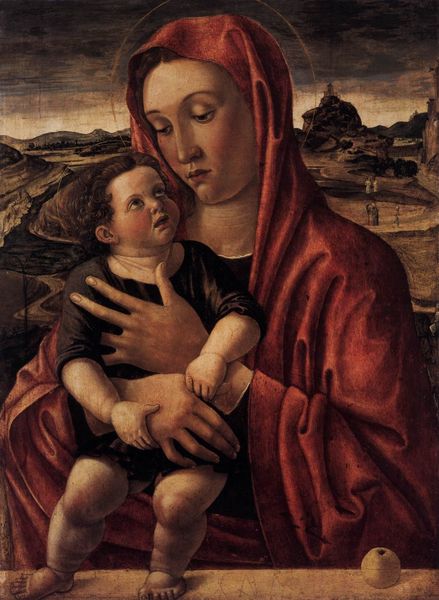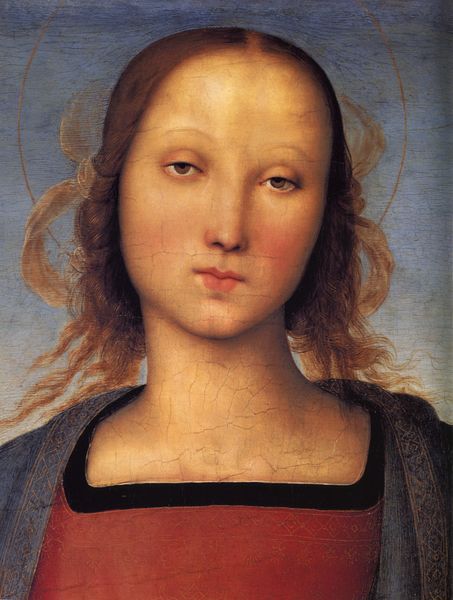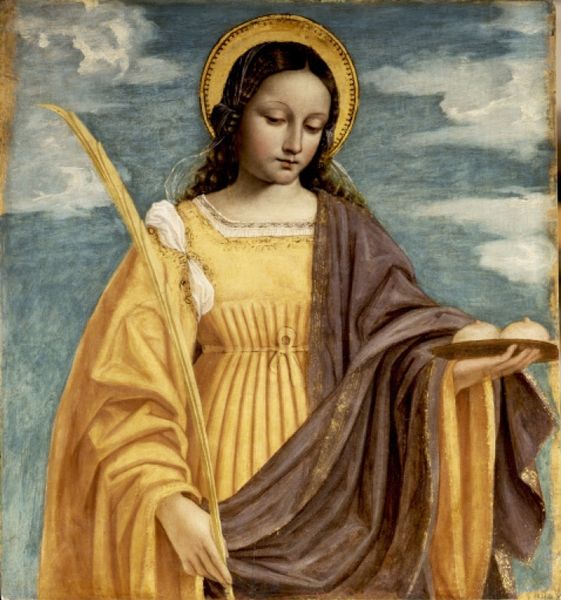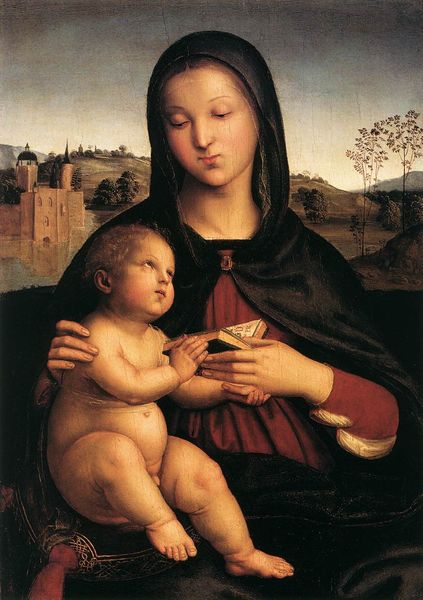
painting, oil-paint
#
portrait
#
high-renaissance
#
narrative-art
#
painting
#
oil-paint
#
history-painting
#
academic-art
#
italian-renaissance
Dimensions: 71.5 x 55.7 cm
Copyright: Public domain
What's missing from this painting? 🧐 Raphael painted the Christian saint Catherine of Alexandria in 1508, when he was just 25. Catherine, a Roman princess, lived in Egypt during the 4th century. According to the traditional narrative, she witnessed a vision of the Virgin Mary at the age of 14. Catherine then became a devout Christian and converted hundreds of people from paganism to Christianity. ✝️ This is an idealised representation of the young saint. Raphael has included a natural landscape, complete with an expanse of gentle blue sky, for the background of the scene. Catherine gazes upwards towards the painting’s frame, where the clouds have dispersed to reveal a small area of gold. This symbolises the heavenly realms, alerting us to Catherine’s focus on heaven. ️ What other techniques has Raphael used here? Catherine stands in a pose known as ‘contrapposto’. This means she is resting her weight on one leg. Contrapposto creates a curve in the body, bringing a sense of life and movement. It feels quite natural, right? The asymmetrical pose can often be seen in classical sculpture, but was revitalised by the artists of the Renaissance. The overall tone is still and peaceful – we feel calm just looking at the work. So, why is this strange? The clue lies in the wooden wheel that we can see at the foreground (front) of the painting. Catherine leans comfortably against the wheel, resting her arm on the top of the wood. But the wheel symbolises something horrifying. At the age of 18, Catherine was condemned to death by Emperor Maxentius. She was tied to a wheel and brutally tortured before her execution. The last known execution using the breaking wheel occurred in 1841. Today, we use the term ‘Catherine Wheel’ to refer to a type of firework! In the lower left corner, the artist has included a dandelion seed pod. This delicate weed might symbolise the vulnerability of life. At the same time, however, the plant is able to thrive in almost any circumstance. Could Raphael be hinting at the resilience of religious belief? It's interesting that Raphael chose to represent Catherine is a state of serenity rather than pain. He has emphasised her devotion rather than her demise, inviting the viewer to focus on her commitment to faith. Raphael (1483-1520) remains a famed figure of the Italian High Renaissance. He was slightly younger than his fellow artists Leonardo and Michelangelo. His work combines the technical precision of Leonardo with the emotion and anatomical realism of Michelangelo.
Comments
No comments
Be the first to comment and join the conversation on the ultimate creative platform.
